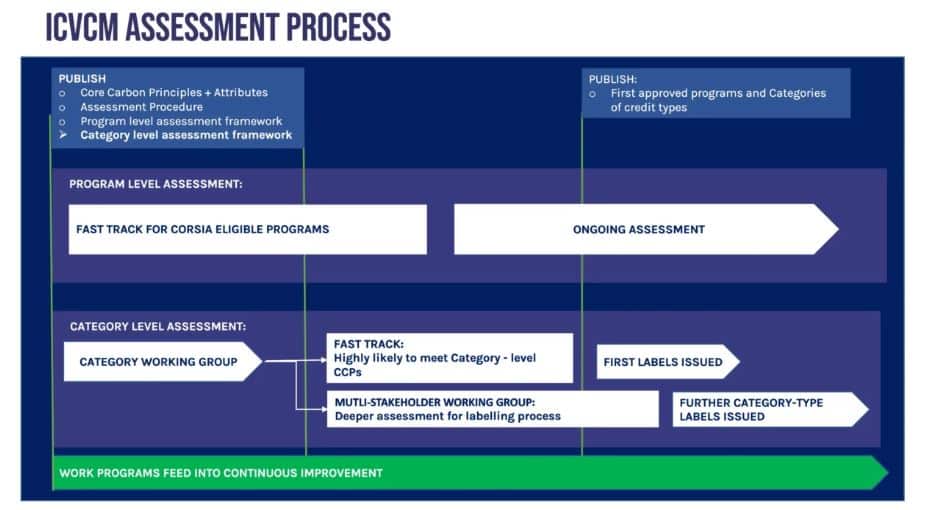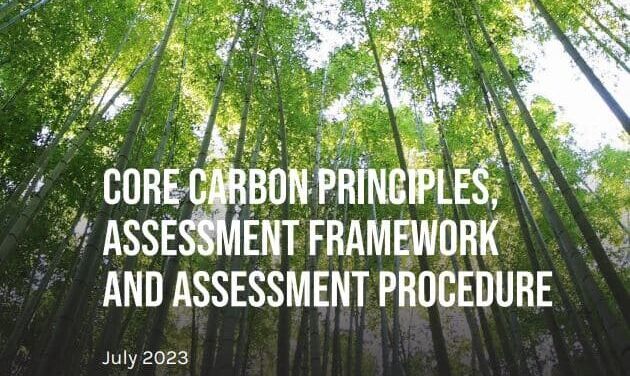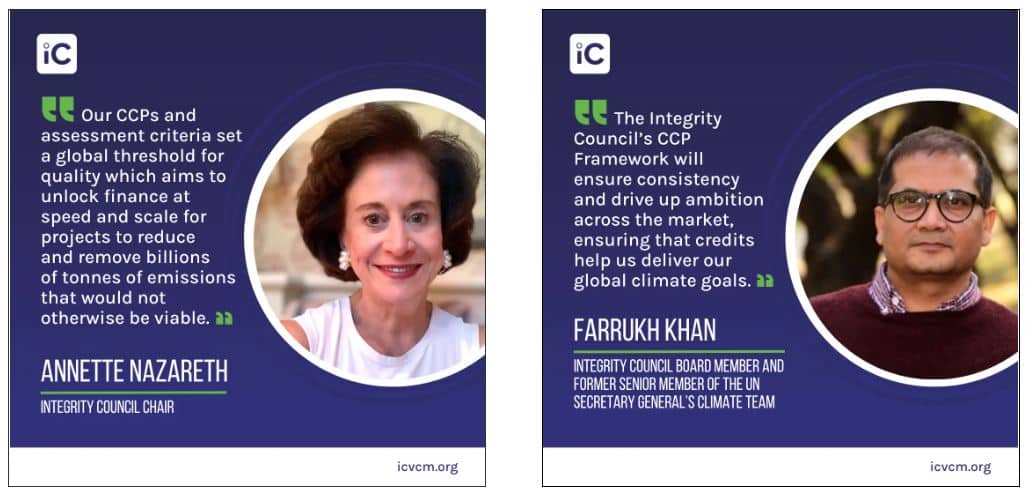The Integrity Council for Voluntary Carbon Market (ICVCM) released the long-awaited framework that provides guidance on defining what makes carbon credits of high quality, which can help boost the credibility of the voluntary carbon market (VCM).
ICVCM’s Assessment Framework is part of their Core Carbon Principles (CCPs) published last March. The framework will be used to assess if carbon credits adhere to its high-integrity CCPs. The CCPs include 10 codes categorized into three areas: governance; emissions impact and sustainable development.
CCP-labeled credits will be available to buyers by the end of the year.
The Integrity Council believes that with their new framework, the VCMs now have a global standard for quality by addressing market issues on confidence and integrity. Executives of the ICVCM highlight the importance of high-quality credits in reducing emissions and delivering global climate goals.
 Carbon Prices Recovering From A Dip
Carbon Prices Recovering From A Dip
The release of the guidance comes at a critical time for the $2 billion carbon market. The growing criticism over some carbon offset projects caused a sharp decline in market liquidity and carbon prices.
Nature-based carbon credit prices (NGEO), in particular, are largely impacted.
Many industry experts hope that this development will inspire more carbon removal and reduction efforts by bringing certainty to VCMs. But for a carbon credit to earn a CCP label, it has to go through two assessment levels.
-
Program Level
This assessment framework and procedure were first released alongside the CCP guidelines. A dedicated “Assessment Platform” is part of this second release specifically designed for crediting programs applying for CCP eligibility.
The ICVCM refers to these programs as a “standard setting program that registers mitigation activities and issues carbon credits”. Established programs are the Gold Standard, American Carbon Registry, and Verra’s Verified Carbon Standard (VCS).
-
Carbon Credit Category Level
This is the newly released assessment guidance but the framework doesn’t define yet what a ‘Category’ means. The Integrity Council will form a Categories Working Group (CWG) tasked to finalize the definition based on data gathered from rating agencies and publicly available information.
The CWG will recommend which categories must be prioritized for approval, which ones need further assessment, and which carbon credits don’t deserve the CCP label.
According to the framework, carbon credits must support carbon projects that align with net zero, additionality, permanent, and robustly quantified.
The goal of the framework is to ensure that the highest quality carbon credits prevail and get premium prices. The assessment process is shown below.

For instance, the world’s leading carbon registry, VCS, has been improving the quality of its forest carbon credits. The mostly used crediting program will finalize its REDD+ methodology by the last quarter of this year.
Quality Issues Remain, Framework to Strengthen
While some improvements are happening in the market, some experts still warn that quality issues of projects continue to persist.
Others say that these efforts from ICVCM and similar initiatives aren’t a “silver bullet” that can instantly resolve the issue of quality. Some say that the growing scrutiny of the VCM highlighted significant failures of the market to deliver at a project level.
Still, as major initiatives focus on the quality of the credits circulating in the market, improvements will happen soon. The Integrity Council will start forming various multi-stakeholder working groups to make things clear and strengthen the framework.
The carbon market governance body will also keep on updating its guidelines and frameworks over time. That means incorporating new developments, technological advances, and lessons learned into the updated version of the framework.
The release of this initiative comes after the VCMI launched its Claims Code of Practice just recently. It’s a separate guideline seeking to make the demand side of the VCM more credible. The Code will help guide companies in using carbon credits to voluntarily offset their emissions.
Both VCMI and ICVCM aim for the same thing: to bring integrity to the VCM. They’re also currently working to create an integrated market integrity framework aimed at improving carbon offset quality.
The ICVCM will start announcing CCP-Eligible programs and CCP-Approved categories later this 2023, making CCP-labeled credits available for buyers before the year ends.
Will this new threshold for quality bring prices of carbon credits up to premium? That’s something to watch out for in the market once the CCP-labeled credits are up and running.



